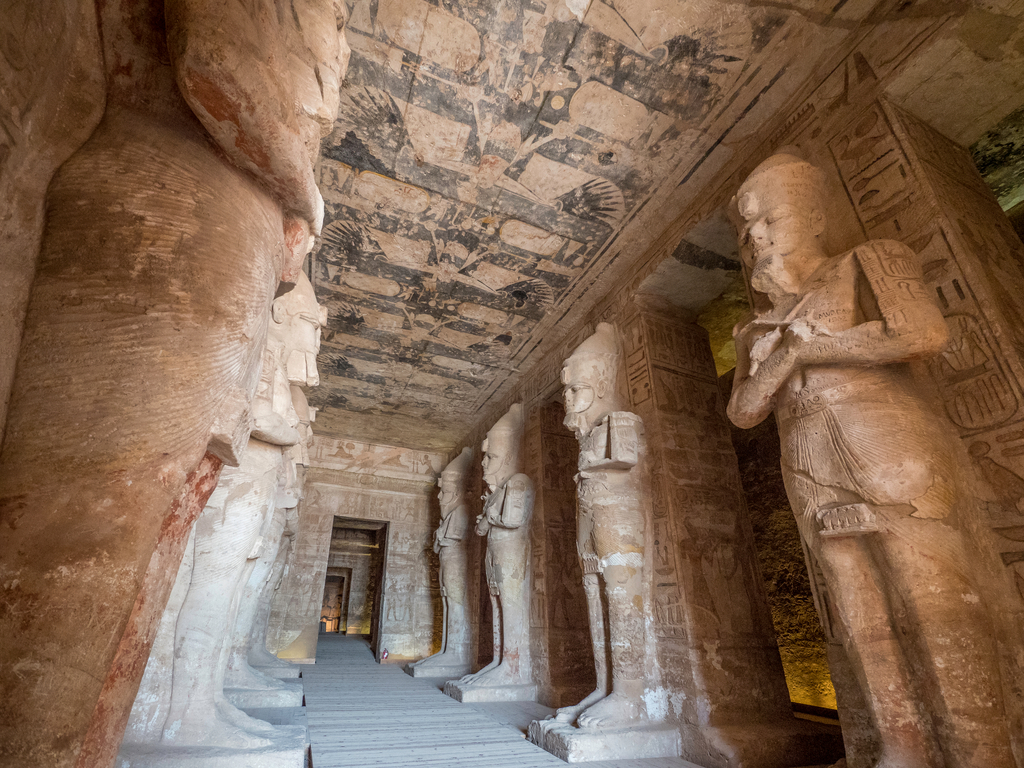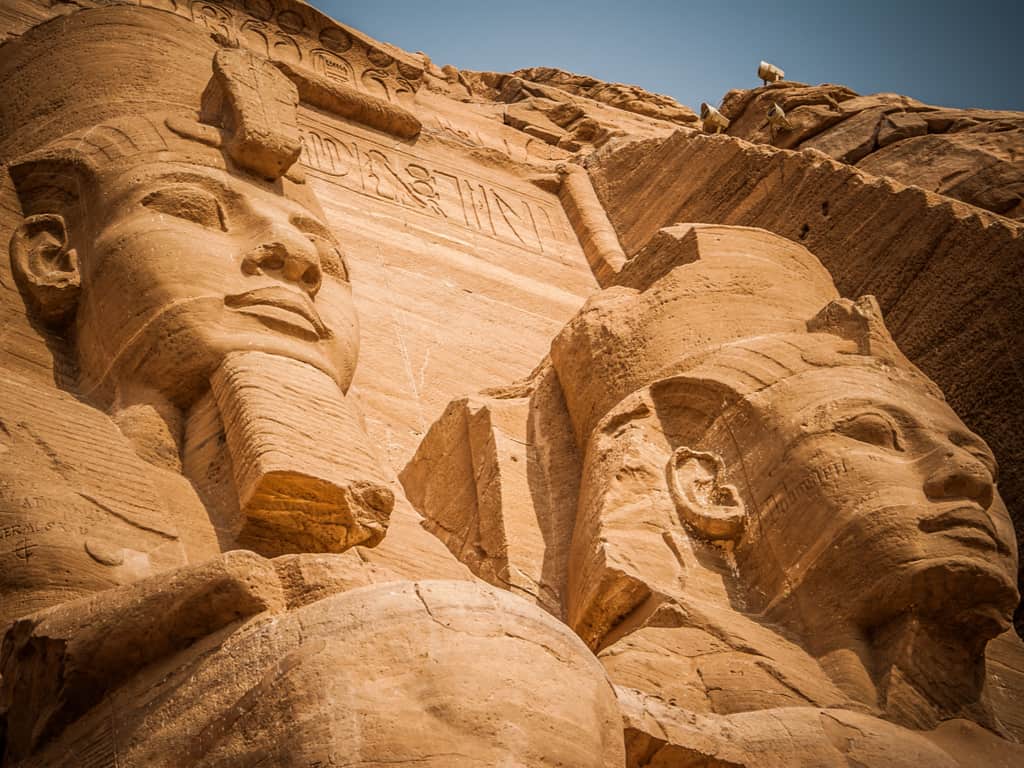Abu Simbel is a remote and tiny village located in southern Egypt, quite close to its border with Sudan and hardly has 3000 inhabitants. Then what is so special about this village? Let us dig into some interesting facts.
Contents
Why is Abu Simbel Important?
The Egyptian Pharaoh Ramesses II built the massive carved out rock temple in 1244 B.C., bragging about his accomplishments. There are two temples at the site – a larger one and a smaller one. The walls of this temple of Abu Simbel depict scenes from the Battle of Kadesh.

What happened to Abu Simbel?
The Abu Simbel temple had to go through quite a lot. Originally constructed in 1244 B.C., it was previously situated at the west banks of the Nile River, in between the first and second cataracts. The concerned authorities decided to relocate it for a reason – They had to construct a dam (now the Aswan High Dam), while the level of the Nile River was already rising. The goal was to prevent flooding and destruction of the Abu Simbel temple.
It was a tough task – breaking the massive structure into pieces that weighed tons, followed by physical transportation. Assembling the pieces and reconstructing the temple as before was the most challenging, though. It took 5 long years and a good 42 million dollars to secure the temple 200 feet above the original location.

How to get to Abu Simbel from Aswan?
The quickest possible way is by flight – it takes hardly 45 minutes. Nevertheless, you can always consider hiring minibusses or private cars as per your choice.
What to do at Abu Simbel?
The number one priority of a traveler would obviously be to visit these magnificent temples. It is spectacular inside out.
Experience a real life time machine as the melodies in the sound and light shows around the temples transpose you to the time of the Pharaohs.
Another landmark is the temple of Wadi El-Sabua, which is also an ancient ruin.
Explore the banks of Lake Nasser as the Lake Nasser Cruise takes you on a memorable ride.

Some lesser-known Abu Simbel facts
The temple complex is part of the UNESCO World Heritage Site of Nubian Monuments.
The deliberate placement of the colossal statues of Pharaoh Ramesses and of his favorite wife, Nefertari ensure that the rising sun rays fall on them on only two days of the year – the Pharaoh’s birthday and his coronation day. Mark the dates – 22 February and 22 September. Do not miss the phenomenon if you visit here around this time.
Jean Louis Burkhardt rediscovered the temple complex in 1813 by a matter of chance after layers of sand had covered it over time.
Lastly, why bother visiting the Abu Simbel temple?
Visit the Abu Simbel temple and see the fascinating history of its temples come to life – watch the engineering phenomenon and participate in the local events. You just can’t make out that this magnificent monument was ever moved. It looks as if it has always belonged there over the rocks.

Where to stay at Abu Simbel?
Stop reading reviews and visit this magical place one and for all. The reality is grander and more majestic than words can capture!
Some of the best hotels near Abu Simbel include the following:
